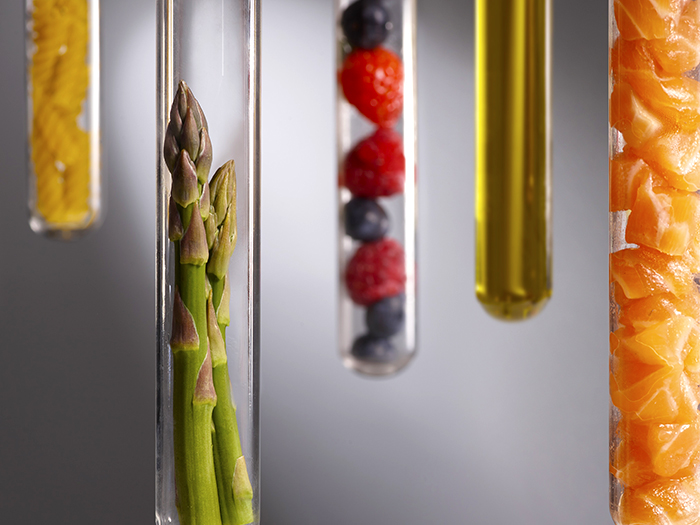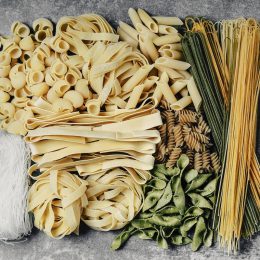5 Healthy Foods That Can Upset Your Stomach
Cleaning up your diet can come with unpleasant side effects like gas and bloating. Here’s how to deal with them.

Feeling lousy after eating a bunch of junk food isn’t surprising. But serious discomfort after downing a perfectly healthy, plant-based meal? That may make you wonder: Is eating healthy even worth it?
The answer is yes. But when you start trying to clean up your diet, your body might need an adjustment period before it feels noticeably better.
“Some healthy foods may cause uncomfortable side effects—everything from bloating to belching to abdominal pain to diarrhea,” says Keri Gans, R.D.N., author of The Small Change Diet.
This is especially true as your body gets used to eating more of them. But before you toss them aside, there’s a silver lining: In most cases, there are simple things you can do to help your body adjust. And you’ll be glad you did. These foods come with some serious health benefits.
From better-known culprits like beans and legumes to some surprising suspects like certain fruits and flavor boosters, here’s why some healthy foods mess with your gut—and how to sidestep the discomfort.
1. Beans and Lentils
Beans, lentils, and other legumes are some of the most heart-friendly foods you can eat.
After analyzing data on nearly 200,000 participants, Harvard researchers discovered people who ate four 100-gram servings of legumes per week were 14 percent less likely to develop coronary heart disease and other types of ischemic heart disease than those who ate less.
As most people know, legumes are rich in fiber, Gans says. Just one half-cup serving of black beans, for instance, packs in eight grams. For people 51 and older, that’s more than one-third of the daily recommended fiber intake for women (21 grams) and more than one-fourth of the daily recommended fiber intake for men (30 grams), according to the National Academy of Medicine.
This helps keep you feeling full longer, but it may also lead to some uncomfortable gastrointestinal (GI) side effects, like gas or bloating, she says.
It’s due in part to a compound called oligosaccharides, a resistant starch that passes through your GI system undigested until it hits the large intestine. When it gets there, the good bacteria in your gut start working to break it down, Gans explains.
“When it does that, the fermentation starts, which can give us gas and bloating,” she says.
How to ease your discomfort:
If you haven’t been eating a lot of fiber, gradually increase your intake to help your body adjust to the demands of breaking it down, Gans says.
Try adding just one serving or so—one half-cup of cooked beans—every few days to give your gut time to get used to the addition. And be sure to drink plenty of water to minimize digestive stress.
Soaking dried beans in water before you cook them can also help remove some of those indigestible sugars that cause flatulence, Gans says. If you plan ahead, cover your beans with two to three inches of cool, clean water. Set aside at room temperature for eight hours or overnight, and drain well.
Or try this quick soak technique: Put beans into a large pot, and cover with two to three inches of cool, clean water. Bring to a boil then boil briskly for two to three minutes. Cover and set aside off of the heat for one hour, and drain well.
2. Cruciferous Vegetables: Broccoli, Cauliflower, Cabbage, Brussels Sprouts
When researchers from Japan tracked 88,000 people for 17 years, they discovered those who ate the most cruciferous vegetables were less likely to die from any cause during the study period than those who ate the least.
That’s a compelling reason to load up on the crunchy veggies, but resist the urge to add too many too fast. Like legumes, cruciferous vegetables contain high amounts of fiber that aren’t broken down until they reach your large intestine.
The compounds at play with cruciferous vegetables are raffinose—a type of oligosaccharide—and hydrogen sulfide. When the bacteria in your gut start working to break down the compounds, they end up producing gas as a byproduct.
It’s similar to what you might feel after eating beans or legumes, but there’s one key difference: The sulfur compounds produced during the breakdown of cruciferous vegetables are responsible for the particularly potent-smelling flatulence you may experience after eating. Dining partners beware.
How to ease your discomfort:
As with beans and legumes, it’s best to gradually increase your intake of cruciferous vegetables, starting with one half-cup serving of cooked vegetables every few days, Gans advises.
Also, some people find relief from cooking cruciferous vegetables rather than eating them raw, she says.
Steam broccoli or cauliflower for a simple, nutritious side dish. Or try Brussels sprouts in recipes from this seven-day meal plan.
3. High-Fructose Fruits: Apples, Watermelon, and Grapes
If you want to satisfy your sweet tooth in the healthiest way possible, fresh fruit can’t be beat.
It may even help safeguard your heart. A 2016 study in the New England Journal of Medicine found people who ate fruit daily were 40 percent less likely to die from heart disease than those who didn’t eat it as frequently.
But for some people, the effects of certain fruits might not be so sweet. Apples, watermelon, and grapes are all high in a type of sugar called fructose. Many people have a fructose intolerance or sensitivity, meaning their body has a hard time digesting this sugar.
The result? “One of the biggest symptoms is diarrhea, but you can also have gas and abdominal pain,” Gans says.
If you have difficulty digesting fructose, chances are it’s not a new thing—but you may not have made the connection that fructose is what’s actually causing the GI distress.
“Many people might have just thought for years that a certain fruit just doesn’t agree with them,” Gans says.
How to ease your discomfort:
Unlike legumes and cruciferous vegetables, gradually adding high-fructose fruits to your diet probably won’t make a difference, Gans says. If certain fruits cause symptoms, you may have to avoid them.
But that doesn’t mean you should cut all fruit from your diet. Instead, opt for lower-fructose options, like berries, oranges, or cantaloupe and honeydew melons.
It’s also a good idea to keep a food journal to track what kind of fruit you’re eating and the side effects you experience, Gans suggests. You may find that certain high-fructose fruits affect you more than others.
4. Dairy
We’ve all heard milk does a body good. And it’s true, particularly for your bones. A study in Osteoporosis International found each additional glass of milk per day was linked to an 8 percent lower risk of hip fractures in men and women over 50.
Subscribe to our newsletter
It's quick and easy. You could be one of the 13 million people who are eligible.
Already a member? Click to discover our 15,000+ participating locations.
Follow Us
But you might’ve noticed some not-so-pleasant side effects after eating dairy that were absent in your youth.
“As people get older, they can become lactose intolerant, even if they were previously able to handle milk and cheese,” says Yamini Natarajan, M.D., an assistant professor of gastroenterology at Baylor College of Medicine.
When you’re lactose intolerant, your small intestine doesn’t make enough lactase—the enzyme that breaks down the milk sugar lactose—to digest dairy. As a result, you can experience gas, bloating, diarrhea, nausea, or abdominal pain within a few hours after eating, Dr. Natarajan says.
How to ease your discomfort:
Hard cheeses are typically easier to digest than milk. But if you don’t want to give up your liquid bone booster, opt for lactose-free versions such as Lactaid or Fairlife ultra-filtered milk, Gans says.
Another option: Take a lactase supplement before eating dairy. This gives your body a boost of the enzyme to help break down the milk sugar.
If you’re turned off by dairy for any reason, be sure to include nondairy sources of calcium in your diet, such as broccoli, canned sardines with soft bones, or calcium-fortified cereals.
5. Alliums: Onions, Garlic, Chives, and Shallots
If you’re watching your weight, you’ve likely heard that swapping high-calorie condiments and sauces for things like garlic, onion, and chives is a smart way to flavor your foods. But your stomach may disagree.
Similar to other items on this list, allium foods contain oligosaccharides, which can lead to gas and bloating as the bacteria in your large intestines work to break them down, Gans says.
How to ease your discomfort:
Some people find relief from cooking garlic and onions rather than eating them raw. If that doesn’t help or you regularly experience discomfort from these foods, even in very small quantities, you might be dealing with an allium intolerance or sensitivity.
In that case, your body can’t break down the oligosaccharides. Instead, those oligosaccharides sit in your GI tract and ferment, causing bloating, gas, and discomfort. The best solution may be to avoid allium foods.
But there are other ways to add flavor without extra calories, salt, and sugar. Try one or more of these easy herb and spice mixes.
When to Call the Doctor
If you try these tips but continue to experience GI discomfort, give your doctor a call. Your doctor can determine if you’re dealing with a food intolerance or sensitivity—or a different digestive problem.
Your doctor may recommend trying an elimination diet: You’ll eliminate and then reintroduce specific foods to your diet to help pinpoint the cause of your GI issues.
Another reason to call your doctor: If you experience non-GI issues, such as itching, hives, or swelling. These may be signs of a food allergy, which is different from a food intolerance or sensitivity. If you experience signs of a severe reaction known as anaphylaxis—wheezing, throat or chest tightness, or trouble breathing—seek medical help right away.
Take Your Favorite SilverSneakers Classes Online!
SilverSneakers members can access live fitness classes and wellness workshops through SilverSneakers LIVE. See the latest schedule and RSVP for classes here.
Not a member? If you have a Medicare Plan, it may include SilverSneakers—at no additional cost. Check your eligibility instantly here.




